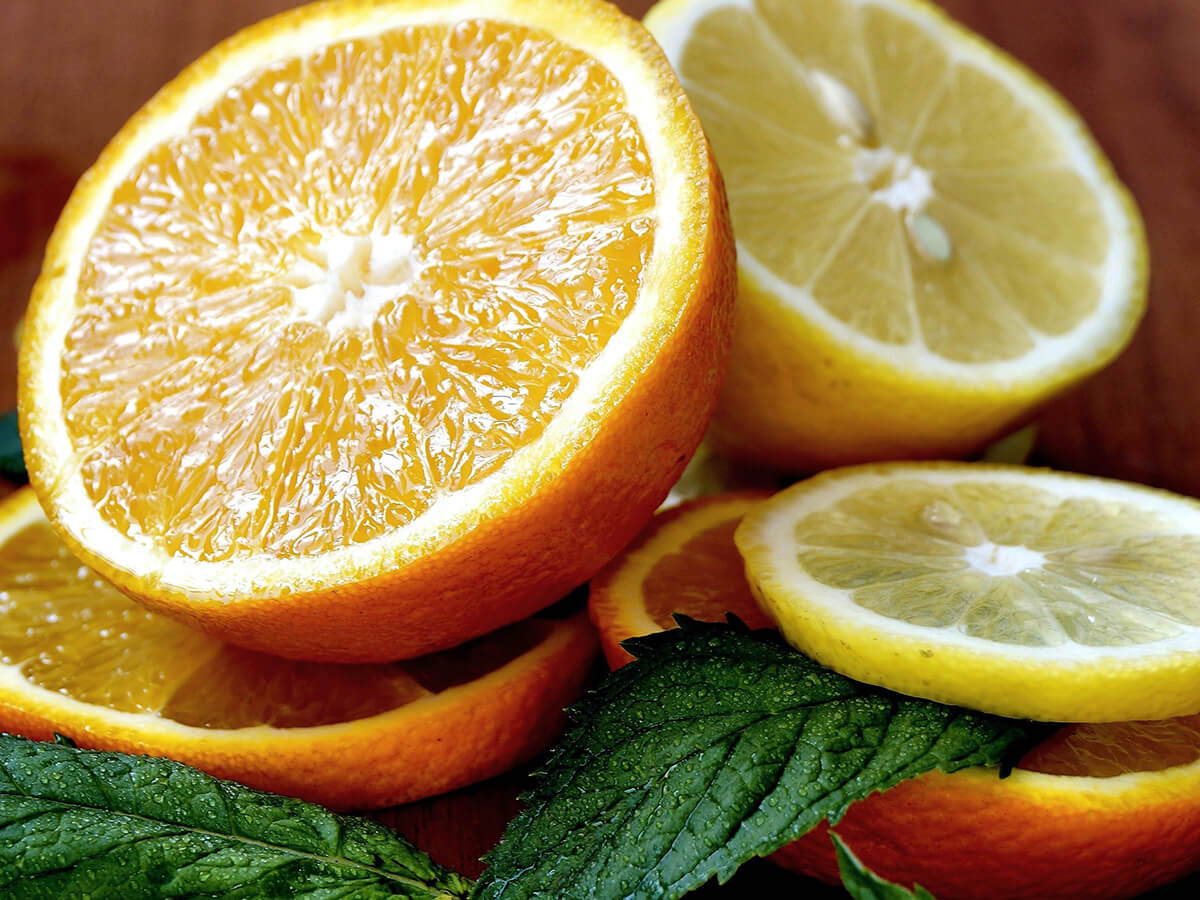Cannabinoids, Terpenes, and Flavonoids Defined
You know cannabis has hundreds of compounds. (Over 400 and counting!) But what you may not know is that not all those compounds are unique to the cannabis plant. In fact, some are ubiquitous in nature, and some are very similar to the natural chemicals our bodies already synthesize on their own.
These compounds fall into three main categories: cannabinoids, terpenes, and flavonoids. They’re the reason cannabis has the amazing ability to create feelings of euphoria, happiness, and even creativity. Understanding what each of them does—and how they interact with the body to do it—is the first step in learning to harness their power and getting the most pleasure and benefit out of your cannabis experience. So, let’s explore!
The Endocannabinoid System and Keeping Your Body Balanced
Before we dive into the actual compounds, let’s talk about how the body interacts with some of them.
The endocannabinoid system (ECS) is a communication system within the body designed to maintain internal balance, otherwise known as homeostasis. Every single vertebrate on the planet has an ECS working to keep things steady and level.
If something in the body is off balance—say you’re having knee pain—the ECS signals to the brain to respond to that area to reduce the pain. The system has three main components:
- Endocannabinoids: These chemicals are naturally synthesized by the brain when they’re needed, as opposed to being created in mass and stored until it’s time to use them. One example you may know is anandamide, or “the bliss molecule”, which has a hand in appetite and mood.
- Receptors: These are what the endocannabinoids bind to in order to do their job to restore balance. There are two main ECS receptors: CB1 and CB2. Both receptors are found throughout the body, though CB1 is mostly in the central nervous system and CB2 is mostly in the immune system.
- Enzymes: Enzymes come in at the end of the process to break down what’s left of the endocannabinoids once their job is done and balance is restored.[1]
Cannabinoids: What They Do and Why They Matter
Now that we know endocannabinoids, let’s talk phytocannabinoids, otherwise known as cannabinoids. These active chemical compounds are the main components behind cannabis’s euphoric effects, particularly the cannabinoid tetrahydrocannabinol (THC), but they have much more to offer than a good buzz.
THC
Cannabinoids work with the endocannabinoid system in a similar way to our endocannabinoids. THC—anandamide’s plant-based complement—acts as an agonist within the ECS, meaning it binds to ECS receptors and mimics what the endocannabinoid would do. But, the body can tell a difference between THC and endocannabinoids like anandamide. For starters, even though THC mimics endocannabinoids, its chemical structure is still different. It’s also more potent and lasts longer in the body than anandamide does.[2]
CBD
Then there’s the other famous cannabinoid—cannabidiol (CBD). CBD functions differently than THC. Though it can bind to ECS receptors, it usually acts as an antagonist, meaning it blocks ECS receptors so other endo or phytocannabinoids can’t bind to them. It’s also an allosteric modulator, meaning it can change the physical shape of an ECS receptor to enhance or inhibit how it transmits a signal.
CBD is a special cannabinoid because it has the ability to work outside the endocannabinoid system—something not all cannabinoids can do. Both its activated and raw forms have displayed the ability to stimulate serotonin receptors, and studies have found activated CBD can also bind to vanilloid receptors, orphan receptors, and nuclear receptors in the body.[2][3]
Other Cannabinoids
CBD and THC are by far the most well know and well studied cannabinoids, but some others are making their way onto the scene. Cannabigerol (CBG) and cannabinol (CBN) are two cannabinoids quickly gaining traction. While there’s isn’t a ton of research into these two yet, we do know that both bind to the ECS in a similar way to THC, though like CBD, they don’t impart a high.
Terpenes: The Compounds Behind That Dank Smell
Phytocannabinoids are unique to the cannabis plant, but terpenes exist throughout nature. They’re what give all plants their smell, from skunky cannabis to sweet rose.
Anytime you open your jar of herb and catch a whiff of citrus or pepper, you’re smelling terpenes (sometimes called terps). Cannabis is loaded with them, but some are more prevalent than others. Here are a few you’ll likely come across:
- Myrcene: This terp is the most common one found in today’s commercial cannabis. You can also find it in thyme, mango, and lemongrass. It smells earthy, herbal, and musky, like cardamom or cloves.
- Limonene: This is the citrusy scent you recognize instantly (think: Lemon Pledge). You can find it in the rinds of lemons and oranges as well as in juniper, rosemary, and peppermint.
- Pinene: This terpene is the most prevalent in nature. It smells exactly like you’d think it would—like pine. You can find it in pine needles, of course, but also in rosemary, basil, parsley, and dill.
Terpenes offer more than pleasant smells, however. Studies have found that, like cannabinoids, they may have therapeutic benefits of their own and could be a better way to classify cannabis than by the current Indica/Sativa designations. There’s not a ton of research out yet, but some studies show these compounds may increase serotonin, norepinephrine, dopamine, and GABA activity in the body. And at least one terp—beta-caryophyllene—behaves like a cannabinoid by activating CB2 receptors.
Again, more research is needed, but it’s worth exploring terps when narrowing down which cannabis products are right for you. If you’re looking for a cannabis product to help you sleep, you might consider reaching for one with myrcene as opposed to one simply labeled “Indica.”[4]
Flavonoids: Colorful Compounds with Serious Benefits
Last, but certainly not least, are flavonoids. Like terpenes, these guys are found throughout nature, although there are some specific to cannabis known as cannaflavins.
Flavonoids give plants their pigment or color, and they also work synergistically with terpenes to create taste and smell. Their main role in nature is to attract pollinators and protect plants against the elements, but they also appear to offer some major benefits to the body. Studies show they have anti-oxidative, anti-inflammatory, anti-mutagenic, and anti-carcinogenic properties.
The flavonoid quercetin, for example, is a known anti-fungal and antioxidant found in many fruits and veggies. Catechins is a flavonoid with cardiovascular health benefits that can be found in cocoa and teas. Cannaflavin A (that’s really what it’s called) has shown promise as a potentially stronger anti-inflammatory than Aspirin. Cannaflavins B and C are still being studied, but if they’re anything like other flavonoids, they’re sure to offer us some therapeutic value.[5][6]
Better Together: The Entourage Effect
Now that we know cannabinoids, terpenes, and flavonoids separately, let’s talk about them together.
You may have heard of the entourage effect. This is the theory that the whole cannabis plant is greater than the sum of its parts. Meaning, a product with all of the plant’s original cannabinoids, terpenes, and flavonoids together might work better than a product that’s just CBD and nothing else.[7]
There’s not much research behind the entourage effect yet, but the idea isn’t unique to cannabis. Take Aspirin, for example. Aspirin is the lab-made version of salicin, which is an active chemical compound found in willow bark. We know that taking too much aspirin can be harmful, but we could drink tea made from willow bark all day without negative effects. Why? Because the other compounds in willow bark even out salicin’s effects. Salicin alone—AKA aspirin—may be too much for the body, but with the plant’s other natural components, it’s fine.
You can apply the same theory to cannabis. For instance, research shows that CBD and CBG may dampen the effects of THC, in turn reducing the paranoia THC can sometimes induce. So, in theory, reaching for a full spectrum product with all of the plant’s chemical compounds may work better for you than an isolate product with just one.
At the end of the day, finding the right cannabis product for you is about narrowing down what your body responds to best. It may take some trial and error, but knowing how the plant’s cannabinoids, terpenes, and flavonoids work will help you make more informed decisions and ultimately help you find exactly what you need. Talk about flower power!
SOURCES
- https://norml.org/marijuana/library/recent-medical-marijuana-research/introduction-to-the-endocannabinoid-system/
- https://www.ncbi.nlm.nih.gov/pmc/articles/PMC3736954/
- https://www.projectcbd.org/science/how-cbd-works
- https://www.leafly.com/news/cannabis-101/terpenes-the-flavors-of-cannabis-aromatherapy
- https://www.leafly.com/news/cannabis-101/what-are-marijuana-flavonoids
- https://www.ncbi.nlm.nih.gov/pmc/articles/PMC5465813/
- https://www.ncbi.nlm.nih.gov/pmc/articles/PMC6334252/

